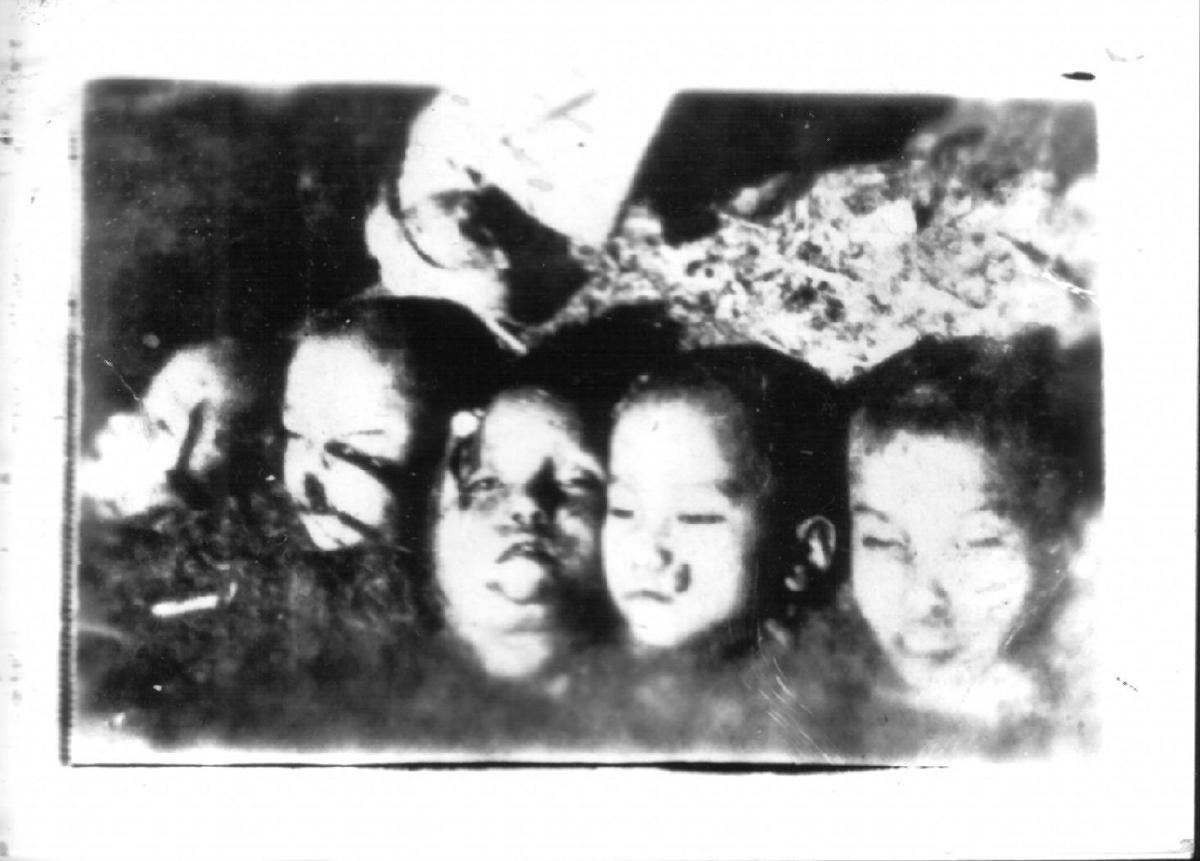





|
|
|
|
October 08, 2003
Traditional ways of getting ahead
What do you do if you are surrounded on all sides by people who want to civilize you, and convert you and your people to their way of life? Head for the hills? Long, long ago, a tribe of people (generally considered to be of Mongolian stock) did just that, settling in the remote Naga Hills area bounded by India, Burma, Assam, Tibet, and China. This means, of course, that they were surrounded by Muslims, Buddhists, Hindus, Confucians, and, of course assorted wannabe Imperialist rulers -- all hell-bent on winning them over to their various ways. How do you make people leave you alone? It is often said that the best defense is a good offense. How do you offer a good offense when your would-be conquerors far outnumber you, are much better armed, possessed of religious fanaticism promising instant heaven to those who die in battle, and more, well, "civilized?" Only one way: you scare the holy crap out of them. I don't mean to particularly offend anyone, but I think this gruesome photograph will demonstrate how it was that the Naga headhunters managed to remain unconquered for so long. Yeah, I know that displaying a photograph of severed children's heads is in questionable taste -- and I hope it doesn't offend any of my readers, who I like to think are mostly jaded enough not to lose their breakfast over it. (In my defense I should point out that I have been looking at it since I was a small boy, so it factors into my child development.) Here it is:  The above is a scan of an actual photograph taken by my father during World War II. The Naga headhunters lived in the rugged terrain in the area of the China-Burma-India (CBI) campaign, where allied soldiers (American, British, Chinese) were fighting the Japanese. My father served as a medical corps officer, and had the distinction of actually operating on a blind Naga chieftain named Rang Lang. When Rang Lang (described by my dad as "a real primitive who had never seen civilization") woke up and saw for the first time in decades, he viewed Army trucks -- a totally new thing. He jumped up and down and squealed and hooted with delight, and presented my father with one hundred chickens and two Naga wives. (No, I am not half Naga....) Rang Lang was delighted with the diaper pins my father had placed in the gigantic, stretched perforations in his ear lobes (the bamboo plugs had to be removed to avoid infection, and my father was trying to be, er, diplomatic...) The grateful chief ordered his men to henceforth inform on the Japanese activities; this was also supplemented by an occasional toss to the Americans of a severed Japanese head. Here's a World War II veteran who confirms this (officially denied) "alliance": I was a combatant in WWII, not a civilian. I served in the CBI with many of your brave Brit soldiers, along with Indian and Chinese troops, and even Naga headhunters from Burma, who were wonderful allies, and tremendously feared by the Japanese. Readers might ask, "But why children? What had they done wrong?" The purpose of lopping the heads off little children was that they were protected by their parents, and thus harder to take as trophies. One baby head equaled several adult heads, leading to more rapid promotion in the tribal hierarchy. Isn't that roughly analogous to the way corporate headhunters operate today? The Naga warriors demanded payment from the American GIs for allowing photographs, and I saw one series of snapshots where a tribesman, angered over not being paid enough, started snatching the heads off the ground and stuffing them into his sack. While I am no expert on the Nagas, I have a warm sentimental spot for them in my heart, and I want to share with my readers what little I could find on the Internet. (Hopefully, without multiculturalist-style sentimentality about noble savages, or moralistic hand-wringing about their direct approach to getting ahead in life.) The extent to which these people have ever been "civilized" is open to question, even today: Whilst some of the more accessible regions came under British Administration under the Raj, much of the region, being covered in mountains and jungles and home to warring tribal groups such as the notorious 'Naked Naga' headhunters remained off-limits. Although some tribal people fought with the British and Indian forces in the decisive battles in Nagaland that turned back the Japanese in WWII, political unrest continued after Indian Independence, with head hunting raids persisting in remote areas into the 1960s. The situation was further exacerbated by the Chinese incursion into Arunachal Pradesh in1962 when they reached as far as Assam, their gateway to India, before running out of supplies and being pushed back to Chinese Occupied Tibet. Considering the country's national pride (to say nothing of effects on tourism), I don't think the Indian government would admit the existence of headhunting. Instead, they seem to have sealed the area off, and are accused of practicing cultural annihilation, if not genocide. Here is a Christian missionary's account: For 50 years the Naga people have struggled for Independence from India. Nagaland is made up of numerous Naga tribes, all of which, because of their Mogolian descent, have more in common with Burmese tribes, their neighbors to the east, than they do with India. Like many indigenous groups in the area, the Nagas' land was arbitrarily split by colonial powers into what they consider false regions, separating them from other Naga groups in other countries. And here is another missionary, who persuaded some of the Naga "old guard" to stage a headhunter dance at a Christian revival meeting: As I got up to preach, I invited two of these old boys, in full regalia, to join me on the platform where I queried them about their past headhunting days. It was quite a site as I got them explain and then demonstrate (not literally) to the crowd how they would have killed an opponent, cut off his head and then stuck it on the end of the spear. I even joined in with them as they chanted their victory chant and danced their victory dance. Now that I had my ‘official’ headhunter necklace, I felt honored to be able to join in with them. But all fun aside, it must have been pretty frightening to run into a bunch of these boys out in the jungle with machetes in one hand and a spears with their former enemy’s heads on them in the other! The crowd roared and laughed as we talked, chanted and danced and as I explained to them that I too was a headhunter and had traveled the world hunting the devil’s head. But more importantly I had come to hunt their souls for Jesus! Anyway, the practice of headhunting is believed to have died out (although only recently): Traditionally fierce warriors and until recently headhunters. The Nagas have defended their land against incursions by invaders. Unlike the Was, who took human skulls to safeguard their society and crops. The Nagas killed for personal glory and for the glory of their villages. The practice of head hunting is believed to have died out in the past twenty years. Although Nagas would not buy skulls like the was sometime did, slaves were bought to be decapitated for their skulls and their heads were hung in baskets high in bamboo groves with arrow driven through the eye sockets to ensure that the ghost would protect the village.For an interesting look at Naga politics today, the Nagas have their own web site. Now, that's progress. What's next, a Naga blogger? For lovers of traditional Naga values who find all this progress unduly threatening, it should be pointed out that you can still buy a traditional headhunting sword, called the "Dao." Respect the past -- but not too literally. (You might lose your head.) posted by Eric on 10.08.03 at 03:21 PM
TrackBack
TrackBack URL for this entry: http://classicalvalues.com/cgi-bin/pings.cgi/410 Listed below are links to weblogs that reference Traditional ways of getting ahead:
» Another linkfest from Dancing with Dogs
Here is an inetresting if disturbing story about the headhunters of the Nagaland Hills - Classical Values: Traditional ways of getting ahead (warning: gory photo in the post) Here is a little before and after about the California recall vote (I know I ... [Read More] Tracked on October 9, 2003 10:39 AM
Comments
Your articles was interesting giving new insight to what I am researching into. I would like to know if you can give me the contact e-mail of those missionaries you mention. I am doing a research on their background and would like to know few things which I just cannot get from books. Lirela S · June 15, 2004 04:44 AM |
|
December 2006
WORLD-WIDE CALENDAR
Search the Site
E-mail
Classics To Go
Archives
December 2006
November 2006 October 2006 September 2006 August 2006 July 2006 June 2006 May 2006 April 2006 March 2006 February 2006 January 2006 December 2005 November 2005 October 2005 September 2005 August 2005 July 2005 June 2005 May 2005 April 2005 March 2005 February 2005 January 2005 December 2004 November 2004 October 2004 September 2004 August 2004 July 2004 June 2004 May 2004 April 2004 March 2004 February 2004 January 2004 December 2003 November 2003 October 2003 September 2003 August 2003 July 2003 June 2003 May 2003 May 2002 See more archives here Old (Blogspot) archives
Recent Entries
• Laughing at the failure of discourse?
• Holiday Blogging • The right to be irrational? • I'm cool with the passion fashion • Climate change meltdown at the polls? • If you're wrong, then so is God? • Have a nice day, asshole! • Scarlet "R"? • Consuming power while empowering consumption • Shrinking is growth!
Links
Site Credits
|
|
I happened to visdit Nagaland last week and had the lifetime expeirence of stying with a naga tribe deep in the forest and spending one of the most memoable nioghts in my life with the rustic naga songs, guitar, game meat, etc. I propose to rite an article about my visit and my experiences. Incidentally their trazditional sword is a 'TAO' and not 'DAO'. I enjoyed reading your article all the same. We should be in touch with each other.